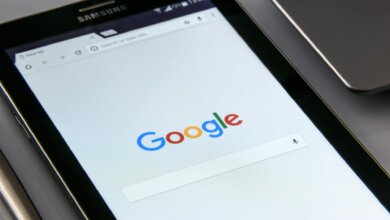The Future of Workforce Planning: Trends Every Business Should Know

Planning for workforce needs has always been essential, but today, it’s evolving faster than ever. As technology changes how teams operate and expectations shift across generations, organizations must rethink how they manage talent. Workforce planning and forecasting is no longer just about filling roles; it’s about preparing for what’s next.
Below are key trends shaping this future and why they matter to every business leader today.
Shift from Static to Agile Planning
Traditional workforce strategies relied heavily on annual plans. But that’s no longer enough. In a fast-paced environment, agility is critical. Businesses must now plan for multiple scenarios rather than rely on a single forecast.
- Agile planning uses short cycles to adjust hiring and resource needs.
- Teams adapt quicker to market shifts, supply chain changes, or talent gaps.
- This reduces risk and helps maintain project continuity.
Companies are moving from rigid structures to flexible talent pools, bringing in specialists on-demand or through internal mobility programs.
Data-Driven Decision Making
Access to real-time insights is reshaping how businesses plan for their future workforce. Data doesn’t just show how many employees a company has—it highlights what skills are missing, how teams are performing, and where changes are needed.
Modern workforce planning and forecasting strategies now rely on tools that offer predictive analytics. These tools help answer:
- What roles will we need in six months?
- Which departments show signs of burnout or turnover?
- Where should we invest in training or recruitment?
By leveraging these insights, businesses make smarter hiring decisions and prepare for future growth.
Rise of Skills-Based Planning
Job titles are becoming less relevant than skill sets. With automation and AI entering the workplace, businesses need to focus on building capabilities—not just filling positions.
This trend shifts focus to:
- What skills are critical for the business?
- How can employees upskill to meet new demands?
- Can internal talent be reshaped rather than replaced?
Many companies now map skill inventories, match them with business goals, and develop training strategies accordingly.
The Role of Remote and Hybrid Work
The workforce has changed dramatically since the rise of remote work. Hybrid work models are here to stay, and they require fresh thinking about team structures and collaboration.
This affects planning in several ways:
- Talent pools have expanded beyond geographic limits.
- Businesses must forecast needs across time zones and work styles.
- Office space planning is replaced by digital infrastructure needs.
Companies that integrate flexible work into their long-term strategies are better positioned to attract and retain talent.
Generational Shifts and Employee Expectations
Today’s workforce spans five generations. Each group brings different expectations, from Gen Z’s demand for purpose-driven roles to Gen X’s focus on work-life balance.
Understanding these differences is vital for planning.
- What motivates different age groups?
- How can employers tailor benefits and roles to each generation?
- What communication styles are most effective?
Tailored planning that accounts for these needs can boost retention and engagement.
Inclusion and Diversity at the Core
Modern workforce strategies must prioritize diversity, equity, and inclusion (DEI). This isn’t just about compliance; it’s a business priority. Diverse teams are proven to be more innovative and productive.
Planning now includes:
- Reviewing hiring practices to reduce bias.
- Building inclusive leadership pipelines.
- Tracking diversity metrics over time.
Organizations that align DEI goals with workforce planning see better team performance and stronger brand reputation.
Automation and AI in Workforce Forecasting
Automation isn’t replacing all jobs—but it’s changing them. From chatbots to predictive hiring tools, AI is playing a bigger role in HR functions.
Future planning must ask:
- Which tasks can automation support?
- How will roles evolve with AI involvement?
- Where should humans focus?
Balancing technology with human skills is crucial. Forecasting tools must adapt as job descriptions evolve alongside tech capabilities.
Integrated Workforce Systems and Productivity Tools
It’s no longer enough to have HR tools that operate in isolation. Businesses need integrated platforms that connect workforce insights across departments—HR, operations, finance, and beyond.
Here’s where workforce productivity analytics comes in. These systems don’t just monitor hours worked. They uncover patterns:
- Which teams deliver the most outcomes per hour?
- Where are inefficiencies dragging performance?
- How can real-time data help with training or workload balance?
This shift enables smarter planning across the board, helping leaders improve both output and employee wellbeing.
Preparing for the Future: What Businesses Should Do
To stay ahead, companies should:
- Invest in tools that support real-time data analysis.
- Map future skills and begin upskilling plans today.
- Embrace hybrid and flexible workforce models.
- Develop inclusive strategies aligned with planning.
- Use cross-functional input when designing workforce plans.
Planning is no longer a yearly exercise—it’s a continuous process, driven by data, shaped by people, and aligned with business strategy.
Conclusion
The future of work will continue to change, shaped by technology, demographics, and shifting expectations. Companies that update their workforce planning and forecasting approach will be more prepared to meet this change head-on. By using insights from workforce productivity analytics, businesses can do more than plan—they can grow, adapt, and lead in a new era of work.




